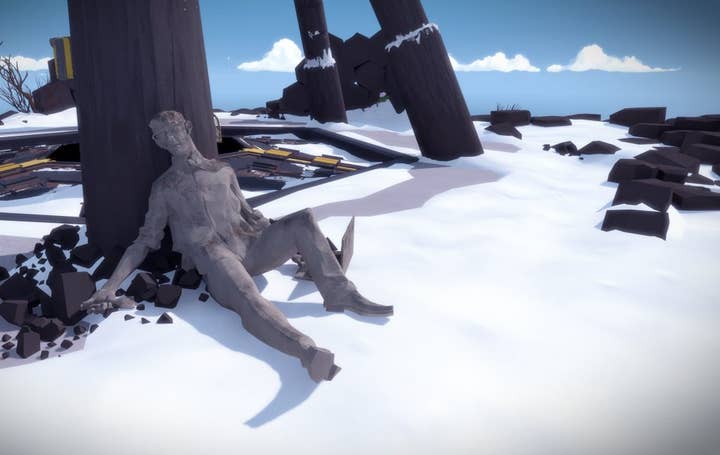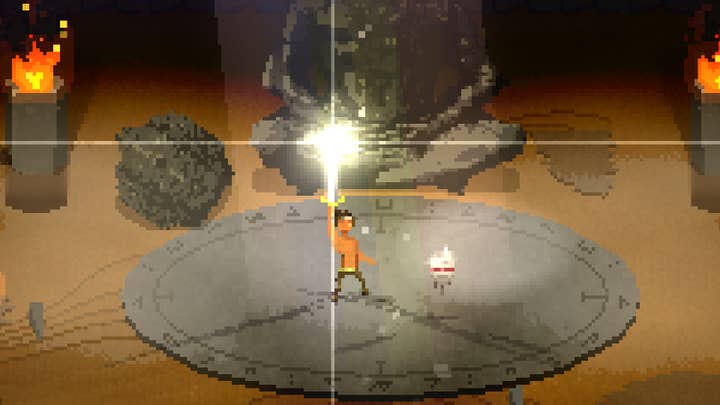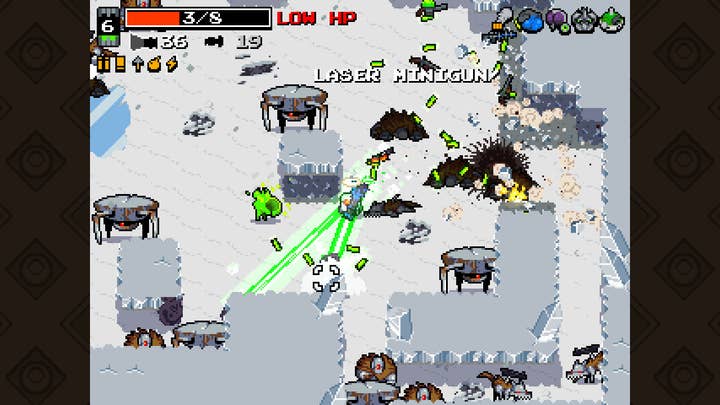Indie game pricing is "more art than science"
Should indies really be charging more for their games? Indie publishers and developers share their perspectives
Last week, Steam Spy's Sergey Galyonkin posted an interesting analysis on the state of game pricing among indie developers. The data shows that, on average, indies charge a little under $9 per title on Steam, and that most games don't get beyond 21,000 units sold. Factor in various Steam sales, when the already low prices drop even further, and it suggests a harsh environment in which to generate revenue.
If your livelihood is relying on money coming in from Steam, you're really up against it. From that basis, Galyonkin argues that indies must start charging more, but the reality is not that simple. There are numerous factors involved in deciding how to price any game, but in the end there's no perfect formula.
"Pricing on a platform, including Steam, is more art than science in most cases, and any sort of general, broad reaching rules aren't particularly useful," says Nigel Lowrie of indie publisher Devolver Digital. "It's important to always find the value that you think your game is worth and balance that with what the consumer in today's marketplace might think based on what you've presented to them.
"Certainly maximizing the price is imperative to reflect the cost of developing, marketing, and supporting the game, but sometimes concessions need to be made to account for other factors in the market. For example, the competitive landscape might help dictate the price based on what similar games are charging, and what consumers expect a game from your genre and of your scope might cost. The first game from a studio might think about a slightly lower price to overcome the market's unfamiliarity with your work, while a second or third effort from a successful developer might yield more leniency from consumers who are already fans of their work. Similarly, larger scoped sequels might be able to show better value and therefore charge more at launch."
"A lot of indies are not equipped or experienced enough to understand how to build an audience for their game on their own"
Scott Brodie, Heart Shaped Games
Figuring out a price for your game is certainly not a cut-and-dried process, but it is possible to draw upon research and analysis of the consumer marketplace rather than making a decision blind.
Nicholas Laborde of Raconteur Games comments, "The primary factors I consider when arriving at a price: Would we pay that price? Would our existing fans pay that price? What price are games with similar amounts of content priced at? Would someone who stumbles across it with no information be willing to pay that price?
"Mix your gut intuition of what you feel is fair with some actual research - do a survey with existing fans on your email list - and you'll arrive at the right price. You can test these things easily to avoid a snafu that detracts from your selling potential."
Trying to charge more for a title is a great idea in theory, but price has to be backed up by value. Even so, an indie's reputation in the industry, or lack thereof, can play a big part in a consumer's reaction.
"Business is two words: perceived value," Laborde continues. "Price is a function of that perceived value, and that perception varies on a case-by-case basis. You will reach more players at a lower price - that's basic economics - but the trade-off is a much higher likelihood of refunds, a negative initial perception due to low price, and more. It's not as if a high price would magically solve all problems.
"If Jon Blow comes out with a $99 game, people would line up to buy it. If I did it, no one would buy it. Reputation plays a role here, but for the rest of us it can be countered with good marketing and proper awareness, which is another factor we must examine in this equation. A lot of indies simply don't, or don't want, to market their games because the business aspect can feel sleazy to them. If you made an objectively great game and you did nothing to market it the odds of it being a financial success are extraordinarily slim, even if you hit the 'right' price range."

When most indies are charging under $9, it becomes that much harder to justify a $20 or $30 game to the Steam audience. There's a strong current that's just difficult to row against.
"I think the increasing flood of games onto Steam has led to an increasing pressure on everyone to find a way to rise above and get noticed," says Heart Shaped Games' Scott Brodie, who has previously written about game pricing. "It's becoming harder to get a bump within the Steam store itself, and a lot of indies are not equipped or experienced enough to understand how to build an audience for their game on their own. A lot of indies look at pricing as a way to lower the barrier for their game to stand a chance of getting wider visibility within the Steam ecosystem.
"I would break even way faster at the $20 [price]. And it's significant; that peace of mind is a huge thing as a developer"
Nate Weiss, Wizard Fu Games
"I think what the Steam Spy analysis is arguing is that's a short-term strategy, and more developers should be thinking about how to price to maximize revenue over the long-tail of the game instead. So I'd largely agree that under-pricing up front hurts your ability to earn over the long-term."
Under-pricing was certainly a major concern for Nate Weiss, the one-man team behind the upcoming Zelda-inspired Songbringer. If you're worried about paying your rent and buying food, the price point on your game becomes crucial. If you're fortunate enough to sell 100,000 units of your game, for example, charging a couple of extra dollars can make all the difference in the world to your livelihood.
"I was very much on the side of the fence where it should be cheaper," Weiss says. "For a long time I thought the game should be $16, and this was from talking with lots of people on streams and things like that. But if I got honest about it, it was mostly that I was afraid that not enough people would buy it at $20 versus $16. It was a crazy debate in my own mind and then [my publisher] Double Eleven suggested we should do $20, and I started thinking about it more seriously.
"Then I started doing the math, and that's what sold me... There were games I was looking at on Steam Spy that had, say, 400,000 sales versus another game at a different price that only had 200,000 sales. It seemed like the game with more owners was making more money, but when you multiply it by how much they're probably making it really works out almost evenly. I finally realized to charge a cheaper price is quite risky.

"You're giving away a lot more of the total net revenue and, secondly, you are giving away your own peace of mind. If I sold a game at $20 versus $15, I would break even way faster at the $20 [price]. And it's significant; that peace of mind is a huge thing as a developer. It's like 'OK, if I can get to my goals financially faster, then hell yeah.' So we decided that we're going to charge $20 for Songbringer, and there's going to be no launch discount. We may be wrong in choosing this. I may fail completely because of that one decision, but I don't think so. I think this is a less risky decision."
For Weiss, the ritual that Steam sales have become also made him reconsider what the final price point needs to be. Nobody forces a developer to participate in a sale, of course, but to not do so is a missed opportunity.
"To just say that indie games are too cheap in general is ignoring the overall player experience"
Vernon Vrolijk, Good Shepherd
"If you look at the graphs of a lot of games on Steam Spy, you see that a lot of their sales come from the winter or summer sales. It's almost like if you're pricing your game lower, and then you drop it even lower than that during one of the winter or summer sales, you're making way [too] little money... Some people will buy your game right away, but a lot of people will just wishlist it and wait until a sale comes along so that they can pick it up at a cheaper price. That is a built-in mechanic of Steam and it's just the way things work. You've got to be participating in those sales, I think."
Steam Spy's Galyonkin was also critical of the launch promotions that indies commonly use use to boost initial sales. Deciding whether or not to offer a discount upfront can be just as difficult as deciding on the price itself.
"A game's pricing needs to not only deliver a great value proposition, but also manage to hit the mark when it comes to perceived risk," says Vernon Vrolijk at the recently rebranded Good Shepherd. "This is a very difficult tightrope for anyone to walk, but it's especially difficult for small new teams that are creating something based on an unknown IP and releasing it in an ever more crowded market.
"For these teams, sometimes the best course of action would be to lower the perceived purchasing risk for players, so that they are more likely to give the game a chance. This helps to more quickly build a community not just around the game, but around the developer. Subsequently they will be able to charge more for their titles once they've earned more consumer trust, as did Jon Blow. However, to just say that indie games are too cheap in general is ignoring the overall player experience, which could be more harmful to the long-term success of a studio than missing the opportunity to earn a bit more from early adopters at launch."
Steam Spy pointed out that the average title on Steam sells about 21,000 units, but that's not necessarily a terrible figure. It all depends on the context, and ultimately developers need to worry more about the revenue generated than units sold.
"The industry needs to compare revenue more than they do units sold, as that is a much more useful indicator of success"
Nigel Lowrie, Devolver
Devolver's Lowrie remarks, "I definitely think the industry needs to compare revenue more than they do units sold, as that is a much more useful indicator of success in a market that is largely driven by sales promotions 3, 12, and 24 months after a game launches. Success begets success on Steam; the better a game does in its launch window can open up more opportunities for features and promotions down the road, so taking a smaller margin upfront in an effort to reach more people can sometimes pay better dividends in the long-term for a game."
So how did we get to this point anyway? While our own Rob Fahey has argued that falling indie prices have had a knock-on effect on big budget productions in the industry, Vlambeer's Rami Ismail believes the pricing ramifications can go both ways. The world of AAA development has certainly affected indies.
"First, there's AAA's prices going down," he says. "Between sales and discounts, bundles and 'subscription services', indies have found themselves competing for a smaller price segment than before. With this new generation of Hellblade and Lawbreakers-style 'indie AAA', you'll find indies mostly can't hit that level of fidelity, thus maxing out their prices at $25.
"Second, there's the graphics race that resulted from the fragmentation of 'indie'. As the scene has grown, it has grown its own segments: the AA indies, often leveraging earlier successes to create high production value games that can easily charge $20 to $30, and smaller indies that do not have those resources but have to compete with those anyway. If consumers see a game with high production values at a cheaper price than a game with lower production values, they'll most likely buy the lower priced one."

Ismail also agrees with the "pressure to participate in the race to the bottom," and the culture of sales on Steam driving prices downward consistently. He also cites a "general lack of confidence" among many indies when it comes to pricing.
"Pricing is like doing a weather forecast, but there's no satellites and no computers, you're locked indoors, and all you have as data is what the people who were outside a few days ago tell you," he says. "What is the value of a game? You can't just say, 'I spent X amount of money making this, and we expect to sell W amount of units, so we divide X by W', mostly because W might as well be a roll of the dice. There's no supply and demand that you can use, as the supply of a digital product is infinite and demand is unknowable.
"As an indie you can often choose the riskier path creatively, but indies frequently have to choose the safer path in terms of business"
Rami Ismail, Vlambeer
"The way I see indies price their games is usually sort of mouthing a price-point, and seeing how that feels. If it feels too low they'll just try again but slightly higher, until everybody involved in the decision feels okay with it. As an indie you can often choose the riskier path creatively, but if you're trying to pay rent indies frequently have to choose the safer path in terms of business. If that means they sell at a lower price and just hope the lower price entices more people, they will choose that option."
Vlambeer charges $13 for Nuclear Throne, which Ismail says is, "a compromise between affordability worldwide and commercial viability for our studio. Like with Ridiculous Fishing; we refuse to discount the game ever, but we've been in charity bundles, we've done giveaways, and we've tried to make sure people that cannot afford our work due to their economical situation can otherwise access it."
Moreover, Ismail and many other indies don't actually want to create games that they could justify selling at $40. Not everything needs be made on the scale of Jon Blow's The Witness.
"It's easy to say that The Witness was $39.99, but The Witness is competing with games like Hellblade and Lawbreakers, not with Braid. At Vlambeer, a studio that has a relatively established name, we can't make $40 games. We don't want to make The Witness, and I'd feel uncomfortable selling our work at $40."
In the end, Ismail doesn't quite see the evidence for charging more, and he doesn't see Steam Spy's conclusion as actionable.
"It's very easy to say 'well, just price it higher', but unless you have an established fanbase that already deeply understands the value of your work, there's very little argument to make in favor of pricing your game up. If you have no established fanbase, your first priority is to expand that fanbase. If you're not working in a visible IP, your first priority is to create visibility.
"As long as you price over the current $8 barrier that denotes a small game, the feeling for many indies is that they'd rather not lose a sale by being priced too high. There's been numerous analyses that have claimed that price elasticity for indie games is relatively inelastic, but many of the pricing choices for indies are made based on feel."
Pricing will remain a delicate topic, but for indies to be able to start pricing up the "indie AAAs" may have to lead the way. "I do think it is up to visible and high-production value indies to gain the confidence to price their games up a bit to create some space for newer developers," says Ismail. "I'm seeing a lot of larger indie games sell at $26.99 nowadays. That's a hopeful development, and I'll be curious to see whether games like Hellblade and Lawbreakers have any effect on that price point."
